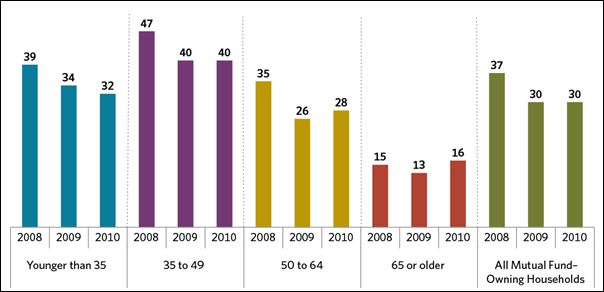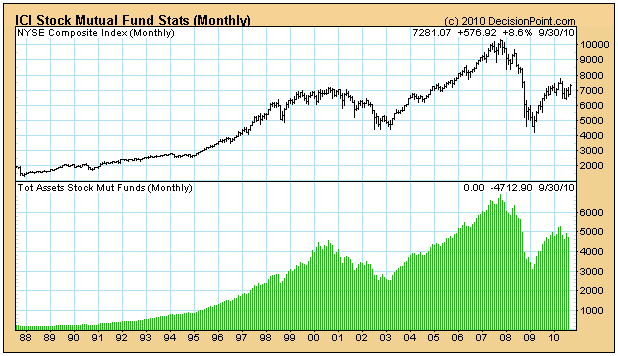According to the Investment Company Institute Annual Mutual Fund Shareholder Tracking Survey, shareholders' willingness to take "substantial or above average risk" has not recovered since the beginning of the financial crisis started in 2008. (Click here to read the entire article.) The chart below shows that there has been marginal recovery in two age groups, but overall risk tolerance is unchanged from last year, which was down from 2008.
Source: ICI Annual Mutual Fund Shareholder Tracking Survey
Faded risk tolerance, of course explains why mutual fund assets are well down from their 2008 high. To be sure, when investor tolerance for risk increases again and new highs in mutual fund assets are seen, another price top will surely be at hand.
The ICI article got me thinking about how the the traditional approach to risk is that we should be more aggressive when we are young, because we will have time to recover from any losses that result from high-risk investments. As we become older we should shrink from the risky antics of the younger set because time is no longer on our side.
In my opinion, this is one of the many flaws in the buy-and-hold logic. Risk has less to do with one's age than it does with the context of the market trend. Being invested when the market is in a bull market significantly reduces the risk no matter how aggressive an investment may seem to be, and even the most conservative exposure will still generate losses in a bear market.
To further illustrate this point we are fortunate that Rydex has three funds, started in 2006, that have conservative, moderate, and aggressive management styles. Review the charts, and we will resume below.
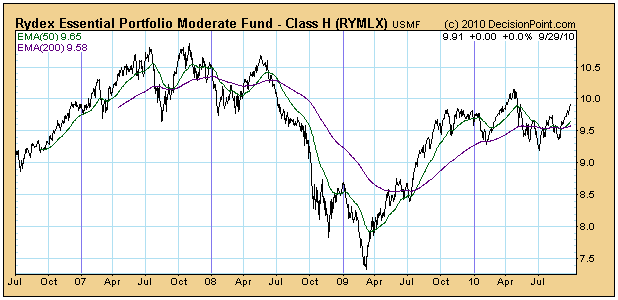
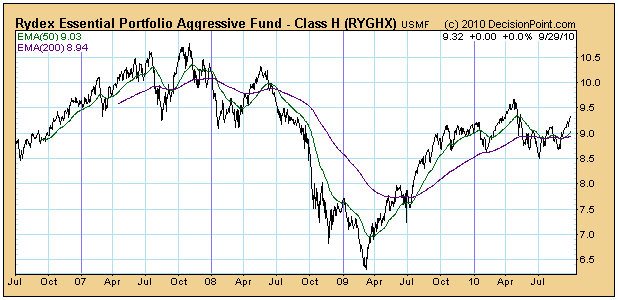
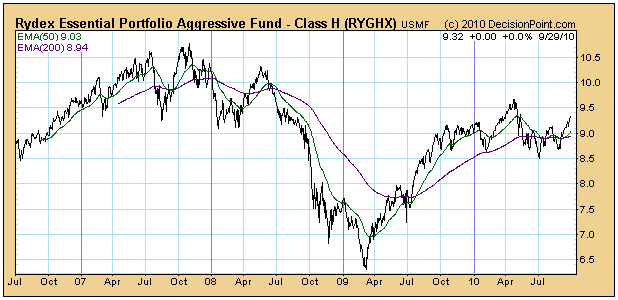
You will notice that the shape of the price indexes are very similar, but the results are quite different. To begin, let's look at the results from inception to 9/29/2010, then during the bear market beginning in 2007/2008, and finally the bull market from the 2009 low to the April 2010 top.
It is interesting that over a range of bull and bear markets, the conservative approach had the best return since inception, but, when we separate the bull and bear market performance, the returns are appropriate (what we would expect) to each approach. For example, the aggressive (most risky) approach loses the most in the bear market, and gains the most in a bull market. The obvious assessment is that, in a buy-and-hold world, there is really no significant benefit of one approach over another, just that the aggressive approach results in more volatility.
While at first glance it may appear that, during the bull market, all approaches have regained slightly more than they lost during the bear market, remember that a 100% gain is needed to recover a 50% loss.
Bottom Line: Using a particular strategy (conservative or aggressive) is not as important as when it is used, and I don't mean whether you are young or old. It is most important that bear markets be avoided and that bull markets be exploited. Using an aggressive strategy during a bull market will carry far less risk than using a conservative approach during a bear market.

